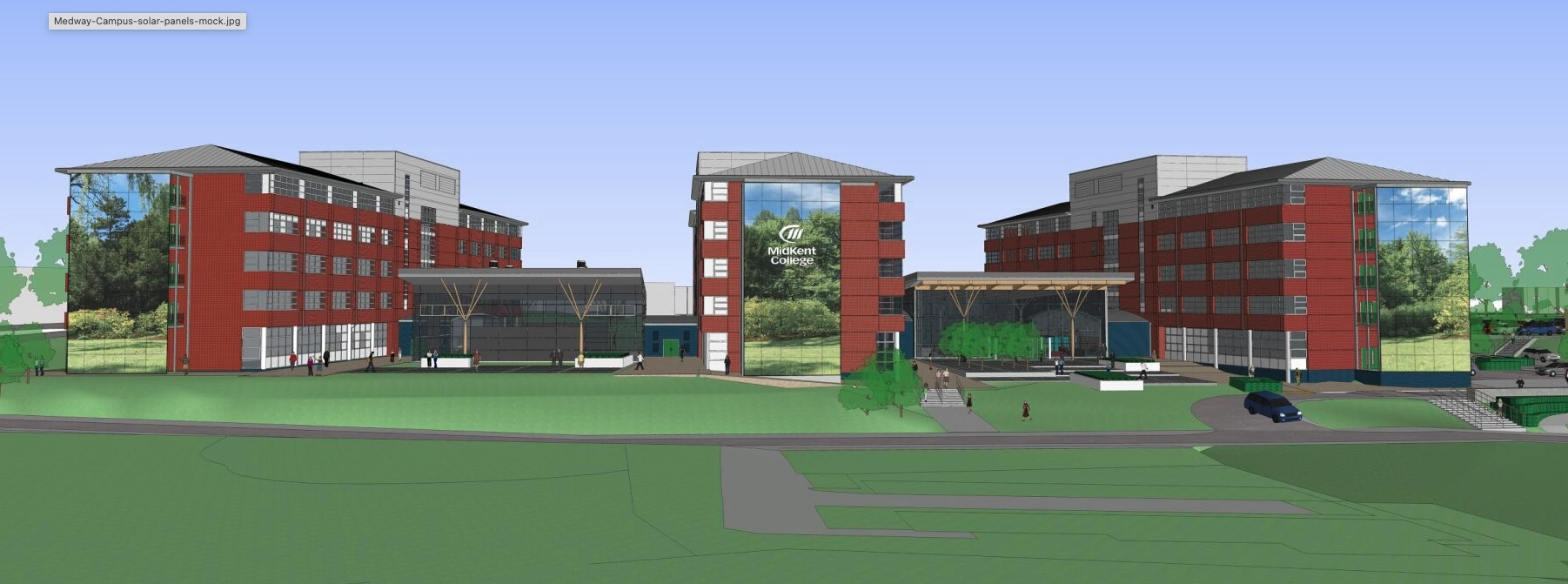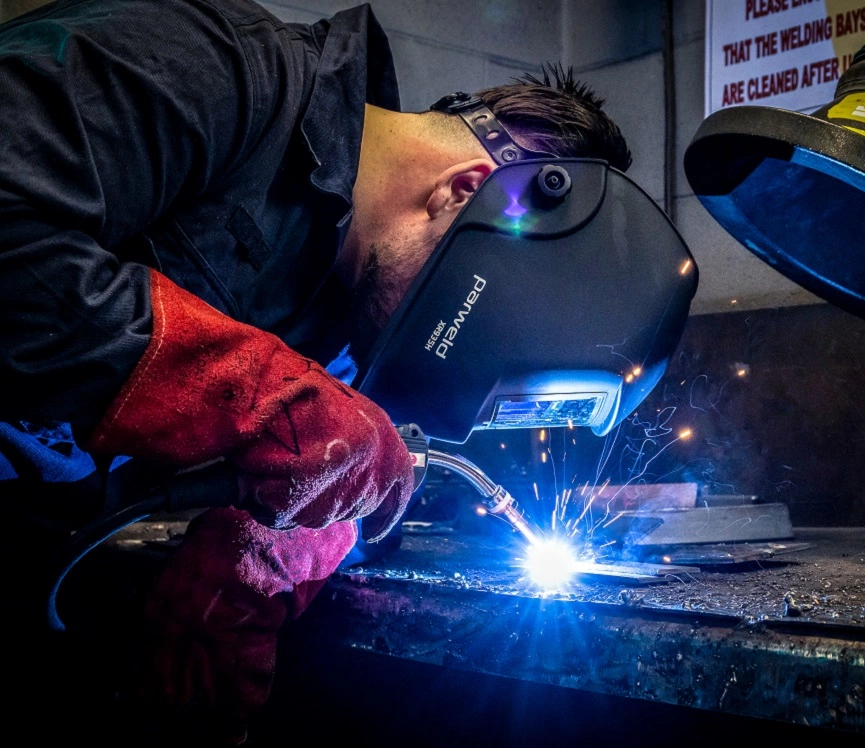Finding a way to incorporate solar into our energy mix at Medway has been a challenge due to the orientation of the site and the availability of roofspace. We do, however, have three large glass-fronted fire escapes at the front of the campus. If only there was a way to make use of that space...
After much investigation, it turned out there was.
In the hunt for the most effective and efficient generation of solar energy for our Medway buildings we're incorporating the very latest vertical solar panel technology. Vertical solar panels, also known as vertical solar arrays or vertical solar facades, are designed to be installed on the sides of buildings or other vertical surfaces, rather than on traditional horizontal surfaces like rooftops. While vertical solar panels work on the same principles as traditional horizontal solar panels, there are some unique considerations to take into account due to their orientation.

(Artist's impression of vertical solar panels at the Medway Campus)
Here's how vertical solar panels work:
- Photovoltaic Cells: Just like traditional solar panels, vertical solar panels consist of photovoltaic (PV) cells. These cells are made from semiconductor materials, such as silicon, that can generate electricity when exposed to sunlight.
- Sunlight Absorption: The vertical solar panels are designed to absorb sunlight that strikes them directly, even though the angle is different from horizontal panels. This direct exposure allows the PV cells to convert sunlight into direct current (DC) electricity.
- Electricity Conversion: The PV cells contain layers of materials that create an electric field when exposed to sunlight. This electric field allows the photovoltaic cells to separate electrons from their atoms, generating a flow of electricity.
- Inverter: The DC electricity produced by the photovoltaic cells needs to be converted into alternating current (AC) electricity, which is the type of electricity used in most buildings and homes. An inverter is used for this purpose.
- Building Integration: One of the key aspects of vertical solar panels is their integration into the building's architecture. The panels are often designed to be aesthetically pleasing and in our case will carry images of native tree species.
- Mounting and Orientation: Vertical solar panels are mounted on vertical surfaces with the appropriate orientation to capture sunlight throughout the day.
- Energy Use or Grid Connection: The electricity generated by the vertical solar panels can be used to power the building's own energy needs, such as lighting, appliances, and other electrical devices. Any excess electricity can be fed back into the grid, often resulting in credits or compensation from utility companies.
We're looking forward to vertical solar panels helping us to improve the aesthetic at the front of our campus, while making use of underutilised building surfaces for energy generation.

